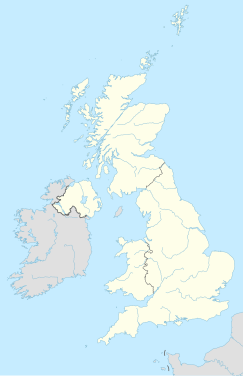Mendip Hills
| Mendip Hills | |
| Protected area | |
|
The Mendip Hills from Crook Peak, near Compton Bishop
|
|
| Country | England |
|---|---|
| County | Somerset |
| Districts | North Somerset, Mendip, Sedgemoor, Bath and North East Somerset |
| Settlements | Wells, Cheddar, Somerset, Shepton Mallet |
| Coordinates | 51°18′N 2°44′W / 51.300°N 2.733°WCoordinates: 51°18′N 2°44′W / 51.300°N 2.733°W |
| Highest point | Beacon Batch |
| - elevation | 325 m (1,066 ft) |
| - coordinates | 51°18′43″N 2°44′28″W / 51.31194°N 2.74111°W |
| Length | 30 km (19 mi), East–West |
| Width | 10 km (6 mi), North–South |
| Area | 200 km2 (77 sq mi) |
| - SSSI | 25 km2 (10 sq mi) |
| - Nature Reserve | 10 km2 (4 sq mi) |
| - National Trust | 71 km2 (27 sq mi) |
| - Somerset Wildlife Trust | 28 km2 (11 sq mi) |
| Biome | Calcareous grassland |
| Geology | Limestone, Karst, Caves |
| Plants | Geranium purpureum, Galium fleurotii, Dianthus gratianopolitanus, Helianthemum apenninum |
| Animals | Peregrine falcon, Long-eared owl, Greater horseshoe bat, Downy emerald, White-clawed crayfish, Hazel dormouse |
| Founded | 1972 |
| Management | Mendip Hills AONB Partnership |
| - location | Charterhouse, Somerset |
| - coordinates | 51°17′56″N 2°42′56″W / 51.29889°N 2.71556°W |
| Website: www.mendiphillsaonb.org.uk | |
The Mendip Hills (commonly called the Mendips) is a range of limestone hills to the south of Bristol and Bath in Somerset, England. Running east to west between Weston-super-Mare and Frome, the hills overlook the Somerset Levels to the south and the Chew Valley and other tributaries of the Avon to the north. The hills give their name to the local government district of Mendip, which administers most of the area. The higher, western part of the hills, covering 198 km2 (76 sq mi) has been designated an Area of Outstanding Natural Beauty (AONB), which gives it a level of protection comparable to a national park.
The hills are largely formed from Carboniferous Limestone, which is quarried at several sites. Three nationally important semi-natural habitats are characteristic of the area: ash–maple woodland, calcareous grassland and mesotrophic grassland. With their temperate climate these support a range of flora and fauna including birds, butterflies and small mammals. The dry stone walls that divide the pasture into fields are of botanical importance as they support important populations of the nationally scarce wall whitlowgrass (Draba muralis).
The origin of the name "Mendip" is unclear, but it is known that there has been human habitation since Palaeolithic and Mesolithic times with a range of artefacts being recovered from caves. Neolithic, Iron Age, and Bronze Age features such as barrows are numerous with over 200 scheduled ancient monuments recorded. There is evidence of mining in the Mendips dating back to the late Bronze Age, which increased after the Roman invasion, particularly for lead and silver around Charterhouse. The difficult conditions in the area were noted by William Wilberforce in 1789, which inspired Hannah More to begin her work improving the conditions of the Mendip miners and agricultural workers. In the 18th and early 19th centuries 7,300 ha (18,000 acres) of the common heathland on the hills were enclosed. In World War II a bombing decoy was constructed on top of Black Down at Beacon Batch. More recently, the mast of the Mendip transmitting station, micro-hydroelectric turbines and a wind turbine have been installed.
...
Wikipedia


